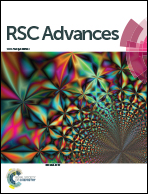Phase-induced porous composite microspheres sintered scaffold with protein–mineral interface for bone tissue engineering
Abstract
Scaffolds for orthopedic reconstruction should best mimic the microenvironment of the bone to instil regenerative potential. In this study, a three-dimensional porous microsphere sintered scaffold that closely resembles bone micro-architecture has been fabricated. Synthesized nanohydroxyapatite (∼30–90 nm) using wet chemical precipitation and poly(hydroxybutyrate)/poly(ε-caprolactone) were blended to develop composite porous microspheres via emulsion induced phase separation. Brunauer–Emmett–Teller analysis reveals presence of cylindrical mesopores in microspheres with surface area 10.64 m2 g−1, which on solvent/non-solvent sintering to scaffold, resembles trabecular section of rat sternum. The scaffold demonstrates desirable compressive strength (1.16 ± 0.17 MPa) and compressive modulus (6.8 ± 1.3 MPa) with slow degradation and microstructural stability for four weeks. Further, incorporation of bovine serum albumin (BSA) in the scaffold establishes protein–mineral interface and exhibits two-phase protein release mechanism (diffusion and polymer degradation). Pore interconnectivity and functional protein loading of scaffold have been evidenced by protein distribution analysis and secondary structural stability. The transverse section of MG63 cells cultured scaffolds with and without protein demonstrates cell infiltration and extension across the pores, while significantly higher proliferation is observed in protein scaffolds at day 7 (p < 0.05). Hence, the biomimetic scaffold with protein–mineral interface could be an ideal substitute for bone regeneration as it establish cell–matrix interaction.


 Please wait while we load your content...
Please wait while we load your content...